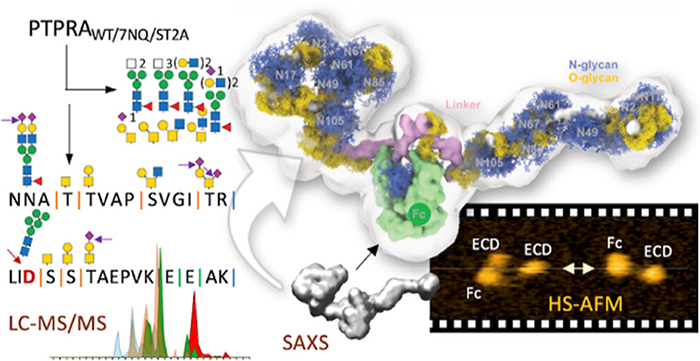
 中央研究院 生物化學研究所
中央研究院 生物化學研究所
The intracellular phosphatase domain of the receptor-type protein tyrosine phosphatase alpha (PTPRA) is known to regulate various signaling pathways related to cell adhesion through c-Src kinase activation. In contrast, the functional significance of its relatively short, intrinsically disordered, and heavily glycosylated ectodomain remains unclear. Through detailed mass spectrometry analyses of a combination of protease and glycosidase digests, we now provide the first experimental evidence for its site-specific glycosylation pattern. This includes the occurrence of O-glycan at the N-glycosylation sequon among the more than 30 O-glycosylation sites confidently identified beside the 7 N-glycosylation sites. The closely spaced N- and O-glycans appear to have mutually limited the extent of further galactosylation and sialylation. An immature smaller form of full-length PTPRA was found to be deficient in O-glycosylation, most likely due to failure to transit the Golgi. N-glycosylation, on the other hand, is dispensable for cell surface expression and contributes less than the extensive O-glycosylation to the overall solution structure of the ectodomain. The glycosylation information is combined with the overall structural features of the ectodomain derived from small-angle X-ray scattering and high-speed atomic force microscopy monitoring to establish a dynamic structural model of the densely glycosylated PTPRA ectodomain. The observed high structural flexibility, as manifested by continuous transitioning from fully to partially extended and fold-back conformations, suggests that the receptor-type phosphatase is anchored to the membrane and kept mostly at a monomeric state through an ectodomain shaped and fully shielded by glycosylation.
